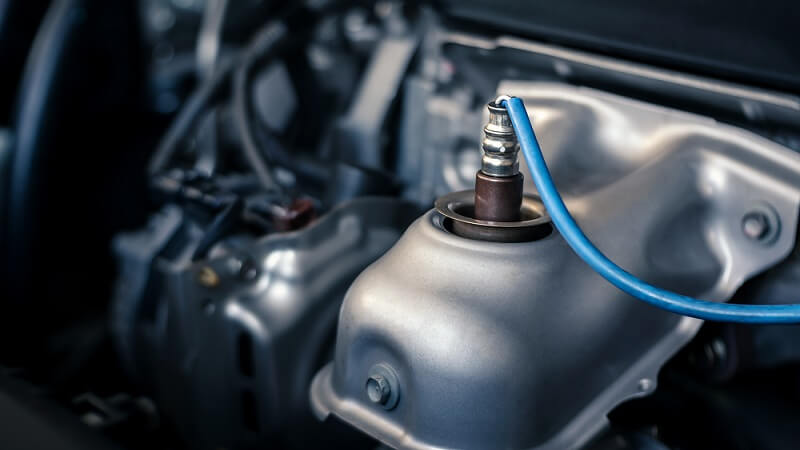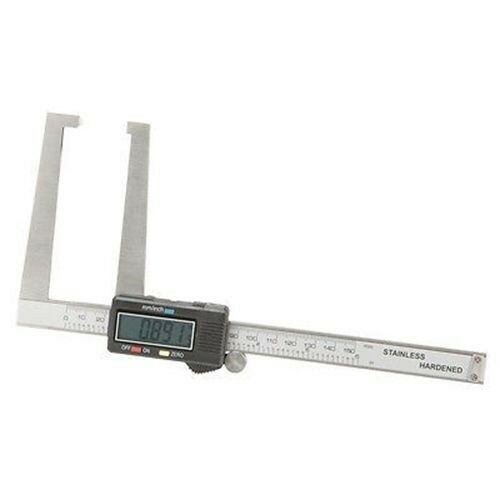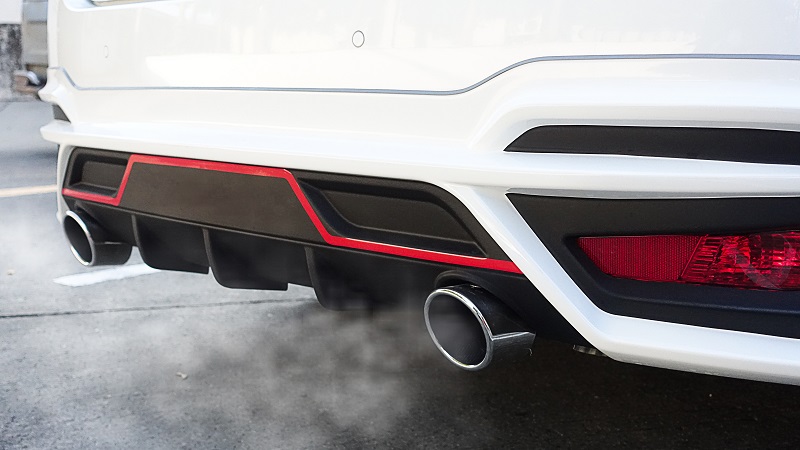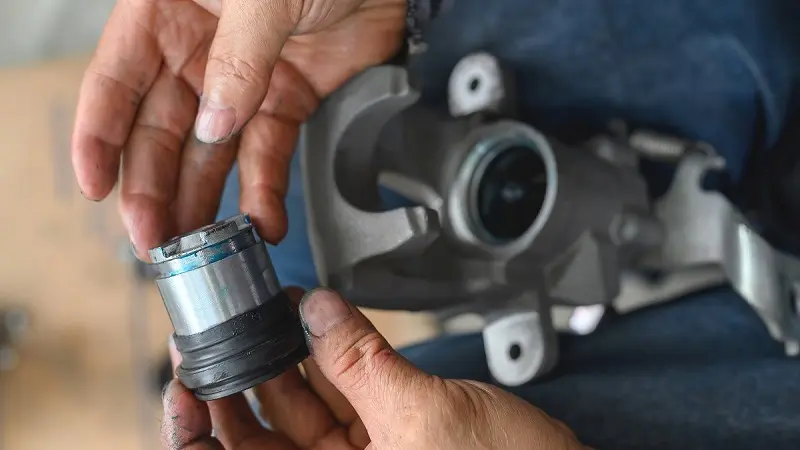A car battery is a crucial part of any vehicle. Without a battery, you can’t even start a car, let alone turn on any of the electrical components found in modern vehicles. Most people don’t check their car batteries regularly. As it turns out, a battery should be checked every once in a while because it can lead to a lot of unwanted issues, and potentially damage to your car.
When their car won’t start, most people think that their battery has died. In many cases, the real culprit are corroded battery terminals. When they corrode, battery terminals can increase the resistance in the system, causing all kinds of issues. In most cases, cleaning the corroded car battery terminals will have a significant improvement on the entire electrical system of your car.
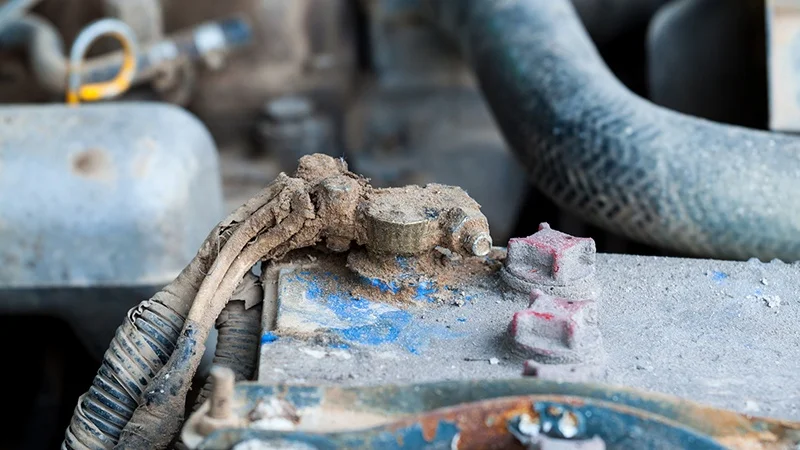
What Causes The Corrosion In Car Battery Terminals?
When the entire car electrical system is working properly and the car battery is at its full health, there should be no corrosion on the terminals. There are a few common reasons why corrosion appears on the terminals, and they include:
- Battery age
- Overcharging
- Reaction in copper clamps
- Overfilled battery
- Electrolyte leakage
Battery Age
When it comes to battery age, it’s expected that one can last 5 to 7 years on average. Even if it’s maintained properly, a car battery will start showing signs of wear after around 5 years, and corroded terminals are one of the signs.
If you have an old battery, you can postpone purchasing a new one if corrosion is the only sign, but it’s a certain sign you’ll need to replace your old battery soon.
Overcharging
Overcharging occurs if the alternator isn’t working properly. To be specific, the voltage regulator is the culprit when it comes to overcharged and undercharged car batteries. Fortunately, it’s pretty inexpensive to fix. The whole thing should set you back around $20-$30 if you catch it before it causes additional damage to your car.
Reaction in Copper Clamps
Even though copper doesn’t corrode, the current can cause corrosion. Simply cleaning the corrosion from time to time will help prevent most, if not all issues.
Overfilled Battery
Although they’re not so common anymore, there are still car batteries that can be topped off using distilled water. It’s important not to overfill the battery because it will reduce its efficiency and can cause other types of issues such as corrosion.
Electrolyte Leakage
Electrolyte leakage occurs when the car battery isn’t maintained properly. Although there’s not much to do when it comes to modern car batteries, they still have to be used from time to time to keep them functioning properly. Electrolytes can leak and cause corrosion on car battery terminals, and you’ll eventually need to replace your battery because of it.
Can a Corroded Car Battery Terminal Be Fixed?

Corroded car battery terminals aren’t that uncommon, even if there’s nothing apparently wrong with the electrical system. Although you’ll most likely notice some signs that the battery isn’t working properly, it doesn’t mean you need to replace it with a new one. In these cases, fixing the corroded car battery terminals and protecting them will do more than enough to make everything work smoothly again.
Getting rid of corrosion on car battery terminals isn’t a difficult job to do, and almost anyone can do it at home. You’ll only need a few tools. It’s worth mentioning that proper PPE is a must, because the car battery corrosion isn’t something you want touching your skin or eyes.
What Happens if Battery Terminals are Corroded?
All the electrical components in a car work when they get a surge of electricity at a specific voltage from the battery. Given the fact that all the components are attached to the battery through the terminals, it’s clear that corrosion can cause a series of complications.
When car battery terminals get corroded, there’s a higher resistance between the battery and the rest of the car. If the corrosion is minimal, you probably won’t even notice it, but once it starts building up around one or both terminals, your car will start acting up.
The most common issue people face when their car battery terminals are corroded is that their car won’t start. The reason why so many people think their battery is dead when there’s only a corrosion buildup is that the symptoms are very similar.
Does Battery Terminal Corrosion Mean the Battery is Bad?
As we’ve already mentioned above, one of the causes for corrosion in car battery terminals is battery age. The corrosion on the terminals further decreases the battery’s efficiency. If left untreated, it can cause the battery to go bad.
With that said, keep in mind that battery terminals corrode for a reason. We’ve already mentioned a couple at the beginning of this article, but if the battery is well-maintained and the alternator is good, there’s no reason why corrosion should even appear.
To sum up this question – corrosion on car battery terminals doesn’t necessarily mean that the battery is bad, but if the source of the problem isn’t fixed, it definitely will be.
A Step-By-Step Guide On Cleaning Corroded Car Battery Terminals
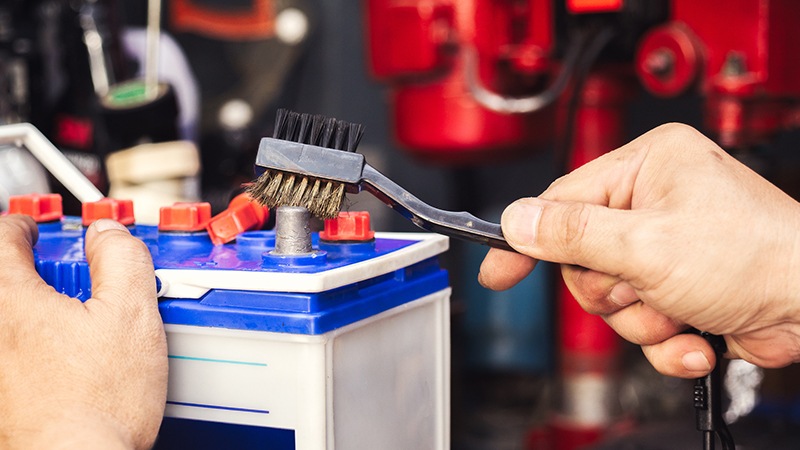
If and when you notice corrosion on your car battery terminals, it’s a good idea to get rid of the corrosion before looking for the cause. By cleaning and maintaining the terminals regularly, your car’s electrical parts will work without any faults, and you’ll prolong the life of the car battery as well.
Two options are available when cleaning car battery terminals of corrosion. The first is by using a metal brush and physically removing any corrosion you see. The other option is by using a spray that will chemically remove the corrosion. The first three steps of the process are the same, no matter which option you choose.
Step 1 – Disconnect The Battery
Before disconnecting the battery, make sure you write down your radio code, save your radio stations and other customizable settings on your car. This will make it much easier to return everything to your preferred settings after you finish cleaning the corrosion from the car battery terminals.
To disconnect the battery, you’ll need to turn off your car and loosen the bolts that hold the clamps to the battery. You’ll need a 5/16 inch (8 mm) wrench, a 3/8 inch (10 mm), or a ½ inch (13 mm) wrench to do this, depending on the terminal configuration on your car.
It’s important to remove the negative (-) terminal first before removing the positive (+) terminal.
Step 2 – Inspect The Battery
After removing the cables from the negative and positive car battery terminals, visually inspect the battery for any damage, cracks, or leaks. If you notice anything out of the ordinary, make sure you replace the battery with a new one.
Step 3 – Inspect The Clamps
If your battery wasn’t secured properly and has space to move even a little bit, your clamps could’ve been damaged along the way. If you notice any cracks, it’s recommended to replace them as well.
Step 4 – Treat The Corrosion
If you choose to remove corrosion from the car battery terminals without buying special sprays, you need to mix a tablespoon of baking soda with one cup of hot water. Spray the mixture on affected areas and watch as the baking soda penetrates the corrosion.
It’s important to spray lightly because you don’t want this mixture entering the battery itself. Wait for a few minutes for the car battery terminals and clamps to soak up the mixture, so you can remove all the corrosion.
When it comes to treating corrosion with a pre-bought spray, the process is pretty much the same – lightly spray the affected area and leave it for a couple of minutes before moving on to the next step.
No matter which option you choose, you’ll see the fluids reacting with the corrosion – a baking soda mixture will start bubbling while the spray will usually change color. Don’t worry, though. This only means you’re on the right way to cleaning the car battery terminals from corrosion.
Depending on how much corrosion there is, you’ll need to repeat this process a few more times.
Step 5 – Rinse
Once you notice there’s no more reaction between the mixture you use and the corrosion, it’s time to rinse everything with clean water. Lightly spray cold water on the treated areas before moving on to the next step.
Use a clean paper towel or rag to soak up all the excess water.
Step 6 – Clean The Terminals
This process is the same for both options. Once you’ve removed the product and baking soda from the affected areas, use a metal battery brush to get rid of all the built-up corrosion from the car battery terminals and clamps. This might take some time, but the better you clean everything, the better the results will be.
You don’t need to be gentle with using these brushes, you just need to make sure you don’t damage other parts of the car. The terminals and cable end should end up being shiny and scuffed, with no traces of corrosion.
Step 7 – Apply Protection
The last step in cleaning car battery terminals includes applying a protective coat that will prevent corrosion from appearing again. You can buy a battery protector spray or use any type of petroleum jelly to grease up the terminals, keeping them corrosion-free for a long time.
Step 8 – Reconnect The Battery
This step is pretty straightforward and requires only tightening two bolts. Once you’ve finished cleaning the car battery terminals, make sure you connect the clamps in the right sequence. First, connect the positive clamp to the positive terminal before connecting the negative one to the negative terminal.
Need Parts?
If you’re looking for quality parts for your car, you’re in the right place. Here at Newparts.com, we offer one of the largest catalogs of Genuine, OEM and aftermarket parts for a wide range of vehicles. Simply head over to our online store, select your vehicle from the drop-down menu, and you’ll be presented with a complete list of parts that fit!



